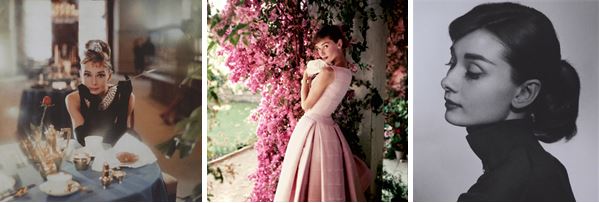
November 17, 2015, by Sunita Tailor
Audrey Hepburn at the National Portrait Gallery – “Portraits of an Icon”
This blog post was written by second year English student, Victoria Lorriman from the School of English.
From the beginning of July until mid-October, the National Portrait Gallery promised to lead us through the life of Audrey Hepburn; one of the world’s most recognised fashion icons and celebrated stars.
Entitled “Portraits of an Icon”, the exhibition focused on twentieth-century prints, magazine covers and stills from Audrey’s filming career, all of which display her as, essentially, a fashion icon. However, Audrey considered her greatest role to be that of a UNICEF International Goodwill Ambassador – a role she spent in more than twenty different countries for a period of five years. She witnessed and reported on the suffering of children and families affected by both natural and man-made disasters. Surely this is the most iconic and inspiring role that Audrey ever carried out?
Admittedly, the exhibition displayed some information boards about Audrey’s work for UNICEF and the charity set up under her name – The Audrey Hepburn Children’s Fund – but these covered the space of about half a wall. The wall opposite was overrun with magazine covers. This leads us to question the public view of an “icon”, and what success looks like to younger generations: just what image exactly do we have of our most celebrated figures, and should we really aim to imitate this?
It is interesting that the exhibition was organised with support from Audrey’s sons, Luca Dotti and Sean Hepburn Ferrer – together constituting the Audrey Hepburn Estate. Both are heavily involved in the running of The Audrey Hepburn Children’s Fund and aware of the impact that working for UNICEF had upon their mother, and yet such a small section of the exhibition was dedicated to this. Nonetheless, Sean and Luca are not to blame. Rather, it is the worldwide view of the media that is responsible for the misrepresentation of contemporary icons. Perhaps Sean and Luca felt obliged to portray Audrey as a fashion icon because it is the main way the public perceive her, our knowledge founded upon television advertisements and billboard posters.
Take, for example, the new Galaxy Chocolate Commercial. A computer-generated Audrey is seated on a bus that is stuck in traffic, growing tiresome. She opens up her handbag, the contents of which contains one Galaxy chocolate bar, breaks off a piece and eats it. She gazes out of the window to observe a handsome man pull his car up next to her, and he is struck by her beauty, resulting in the blossoming of a romance.
The computer-generated image of Audrey presents a perfectly slender woman, with large, dark eyes, thick black lashes and rosy lips. She secures the affections of a young man and enjoys her chocolate as they drive off into the sunset. This advert paints a picture of a stereotypically perfect woman, who can enjoy luxuries whilst maintaining a model-like appearance. It is, of course, a wholly unrealistic representation of life as a celebrity. However, this advertisement could be on at any time during the day and children may be exposed to such hyperbolic images. It seems that the media, then, have a significant part to play in what we teach children. The media teaches that an “icon” is both materialistically and physically well-off.
The utilisation of Audrey’s image to promote various commodities creates a false impression of her iconic status. Her delicate figure is, in fact, a result of living through World War Two with relatives in Holland during her childhood. Whilst Germany invaded Holland, Audrey and her mother experienced extreme malnourishment, from which she never fully recovered. Audrey’s distressing experience throughout the war inspired her to become a UNICEF International Goodwill Ambassador later in life. She transformed painful memories from her past into a catalyst for giving something back to the world. This is the reason that we should treat Audrey as an icon, not because her face features on enough magazine covers to coat a wall. Her benevolence and desire to act against the maltreatment of others is what we, and our children, should aim to imitate.
[Featured images from:
http://mirandasnotebook.com/audrey-hepburn-at-the-national-portrait-gallery/
http://papuatattoo.com/advertising-2/watch-audrey-hepburn-stars-in-galaxy-chocolate-commercial/]
No comments yet, fill out a comment to be the first


Leave a Reply